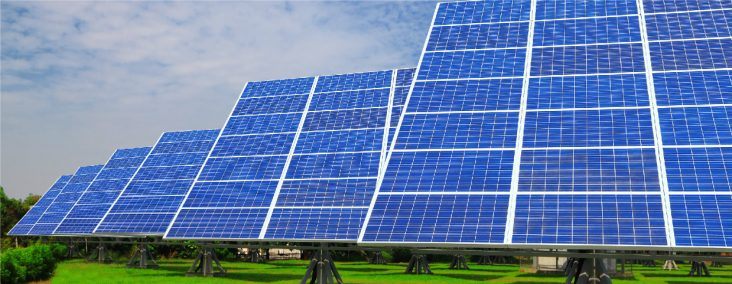Clarksville utility, Scenic Hill Solar to partner on $10 million solar power plant
by June 29, 2017 3:40 pm 2,148 views

Add the Johnson County seat of Clarksville to the growing list of cities and companies in Arkansas investing in solar power. Once built, it will be the largest solar power facility for an Arkansas city.
The bulk of the upfront investment is from Little Rock-based Scenic Hill Solar, and is around $10 million. The facility is expected to be on-line by mid-2018, and will generate 6.5 megawatt of power. According to Scenic Hill, the plant will be Arkansas’s 3rd-largest solar power plant. Scenic Hill is owned by former Arkansas Lt. Gov. Bill Halter.
Scenic Hill Solar will build, own and operate the plant on land leased from Clarksville Light & Water Company. The city utility will then purchase the solar plant’s power based on the terms of a 30-year contract. Contract terms were not immediately available.
“The effort is designed to position Clarksville, Arkansas as a town with the quality of life of a small town, but one that can think and do big things,” Clarksville Light & Water Company General Manager John Lester said in a statement. “We are delighted that this project will save our customers approximately $500,000 annually while growing our existing renewable generation supply portfolio with what will be our first locally-based power generation resource.”
According to Scenic Hill, the power plant will:
• Produce more than 11,000,000 kWh of electricity in the first year of operation and produce over 305,000,000 kWh of electricity over the 30-year contract;
• Produce enough clean electricity to meet more than 25% of Clarksville’s residential electricity consumption;
• Occupy more than 40 acres bordered by Main Street and Clark Road and be visible from Interstate 40; and
• Reduce carbon emissions by more than 215,000 metric tons which is the equivalent of driving more than 516 million fewer passenger car miles.
“This leading-edge project proves that electric utilities can simultaneously lower costs for their customers, provide clean and sustainable energy, and provide economic development for their communities. Clarksville Light & Water Company is leading the way into the 21st Century Economy for their community,” Halter said in a statement.
News of the Clarksville solar power plant elicited praise from the Sierra Club of Arkansas.
“Clean energy production is happening all across our country, and seeing it blossom all over Arkansas is nothing short of exhilarating. Constructing projects like this one in Clarksville mean cleaner air, better health, smaller utility bills, and good-paying jobs for Arkansans,” said Glen Hooks, president of the Sierra Club of Arkansas. “Today’s announcement is further evidence that clean energy is on the rise, while our country is transitioning away from dirty coal and other fossil fuels. Cities across Arkansas – including places like Camden, Stuttgart, North Little Rock, Benton, Ozark, and Bearden – are leading the way.”
Indeed, solar power use is on the rise in Arkansas. Following are just a few of the recent announcements.
• Entergy announced in May it will build a 475-acre solar plant near Stuttgart and will feature more than 350,000 photovoltaic solar panels that convert the sun’s energy into electricity. The solar energy center will have a capacity to generate 81 megawatts of electricity, or enough to power more than 13,000 homes.
Scenic Hill and L’Oréal USA opened in April a solar panel project that will help power the North Little Rock manufacturing plant. The 3,528 solar panels were installed earlier this year and will provide 1.2 MW of renewable energy to the factory that is expected to reduce carbon emissions by 556 metric tons per year.
Ouachita Electric Cooperative of Camden announced in February a partnership with Today’s Power to build a 1-megawatt solar facility on 10 acres in Holly Springs, Ark. Today’s Power, a subsidiary of Little Rock-based Arkansas Electric Cooperatives, distributes and installs TKS photovoltaic systems. The project is expected to be completed in the second quarter of 2017 and will include an array of 4,080 panels, encompassing 5.5 acres. The facility could provide enough electricity to power up to 250 homes. OEC members who purchase solar power generated by the facility can receive credit on their electric bills. OEC provides electric service to 9,400 meters across Ouachita, Calhoun, Dallas, Bradley and Nevada counties.
Solar power is also growing in terms of U.S. electricity production. Since 2008, the amount of utility-scale solar capacity has risen each year, except for 2014.
“About 7.7 GW of utility-scale solar was added in 2016 — the most ever,” according to a report from the U.S. Energy Information Administration. “The amount of utility-scale solar capacity added in 2016 alone was greater than all utility-scale solar that had been added through 2013.”
